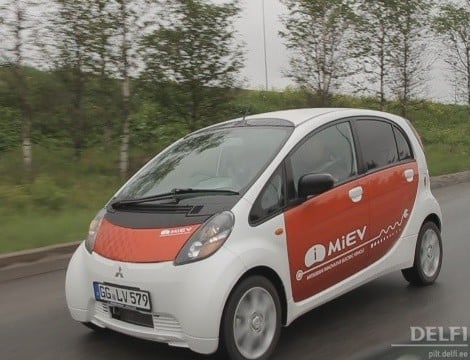
Photo: Estonia.EU
Estonia, which joined the EU in 2004 and the Eurozone in 2011, officially unveiled its nation-wide electric vehicle (EV) network last week. The ex-Soviet republic designed its pioneering new fast-charging, web-connected network to eliminate “range anxiety,” improve energy efficiency and reduce carbon emissions.
The network’s current infrastructure includes 151 fast-charging stations with 14 additional scheduled to be completed by summer. The fast-charging stations have been installed in towns, cities and along highways with no distance greater than 26-37 miles (40-60 kilometers) with places of interest, gasoline stations and tourist destinations factored in. In gross numbers, Japan dominates global deployment: of the more than 1,900 fast-chargers installed, only 521 are located off-the-shores of Japan.
Nevertheless, Estonia, with a population of 1.3 million people, now has the world’s largest operational public fast-charging network providing a universal nationwide service, according to CHAdeMO, an organization that calls for a fast-charging standard. Before the official announcement, Estonia’s network actually was up-and-running for a few months providing 8,000 charges.
The network received its funding by the Estonian government’s sale of 10 million surplus carbon dioxide emissions permits to Mitsubishi Corporation in 2010. The Estonian government now offers very generous subsidies for private citizens totaling as much as $23,500 (18,000 euros). Also, new EV owners can apply for a support of $1,300 (1,000 euros) for installing a charging system at their home. To utilize the fast-charging network, customers choose between three plans that best fit their driving needs and then can sign-up online. Once a ELMO RFID-card, which tracks usage, is received, a driver can access any charging station.
Of the total 619 all-EV cars registered with the Estonian traffic register, 507 are Mitsubishi i-MiEV for government agencies’ use. With the small population base, there is now 1 EV registered for every 1,000 cars. This sums to second in terms of share of EVs in the world. Estonia ranks ahead of third-place Netherlands which has 0.6 EVs registered per 1,000 cars and behind only Norway with 4 EVs registered per 1,000 cars. Jarmo Tuisk, head of the new electromobility program now is hopeful that EV ownership will double this year.
Depending on the model of EV, the charging stations have been promoted to provide up to a 90 percent charge in less than 30 minutes. The range for the charge is dependent on the model and driving style. The charging stations were installed by ABB, a power and automation technologies firm, and use direct current (DC). Ulrich Spiesshofer, head of discrete automation and motion at ABB, believes: “Having a nationwide fast-charging network will motivate other countries to invest in their own charging infrastructure” and can lead to expansion in the industry.
Estonia’s minister of the environment, Keit Pentus-Rosimannus, said: “The fact that recharging is so easy is one of the main reasons more and more Estonians will decide in favor of electric cars in future. Our entire transport policy should be based on the notion that environmentally friendly travel is the cheapest and simplest option there is.”
The new EV network is by no means a coup for the environment yet. Estonia is reliant on oil shale, which yields large amounts of carbon dioxide, for more than 85 percent of its electrical energy. Eesti Energia, the wholly state-owned electric utility, recognizes the need to diversify its portfolio and use energy sources to limit greenhouse gases, especially in order to meet the Europe Union target of receiving 20 percent of energy via renewable energy by 2020, and to limit environmental impacts. At the same time the company issued the caveat that increased reliance on renewable energy will add to consumer energy bills and it may need to explore the use of nuclear energy for a base load energy source.
The is particularly pertinent now as Estonians have become incensed from dramatically increasing electricity prices, mainly due to deregulation of the power market in January. The price of electricity escalated 23.6 percent from December to January, according to Statistics Estonia.
Other experts believe as more renewable energy is available it will level off the price and make it competitive, thus curtailing rate increases. With an eye on the future, renewable energy has begun to achieve significant market penetration. In 2012, the share of renewable power in Estonia’s total electricity consumption increased two percent reaching 14.9 percent, according to Estonian transmission system operator (TSO) Elering. Renewable electricity production in Estonia grew 18 percent year-on-year to 30 gigawatts (GW) in 2012 and Eesti Energia estimates it will reach 240 GW in 2021. Estonia’s renewable power includes biomass, which comprises 75 percent of the renewable total, hydro and wind.
The EV infrastructure is in place to help harness a further shift towards renewables as EVs and the batteries become more common and smart grid technology is deployed. Despite its relative small population, Estonia has taken initial steps to realign its internal combustion engine landscape. The bold initiative will prove a model for other countries to replicate and serve as proof such an infrastructure is feasible. As Estonia has proven making technology – especially the internet — inclusive, it sets its visions on a goal for future national achievement.